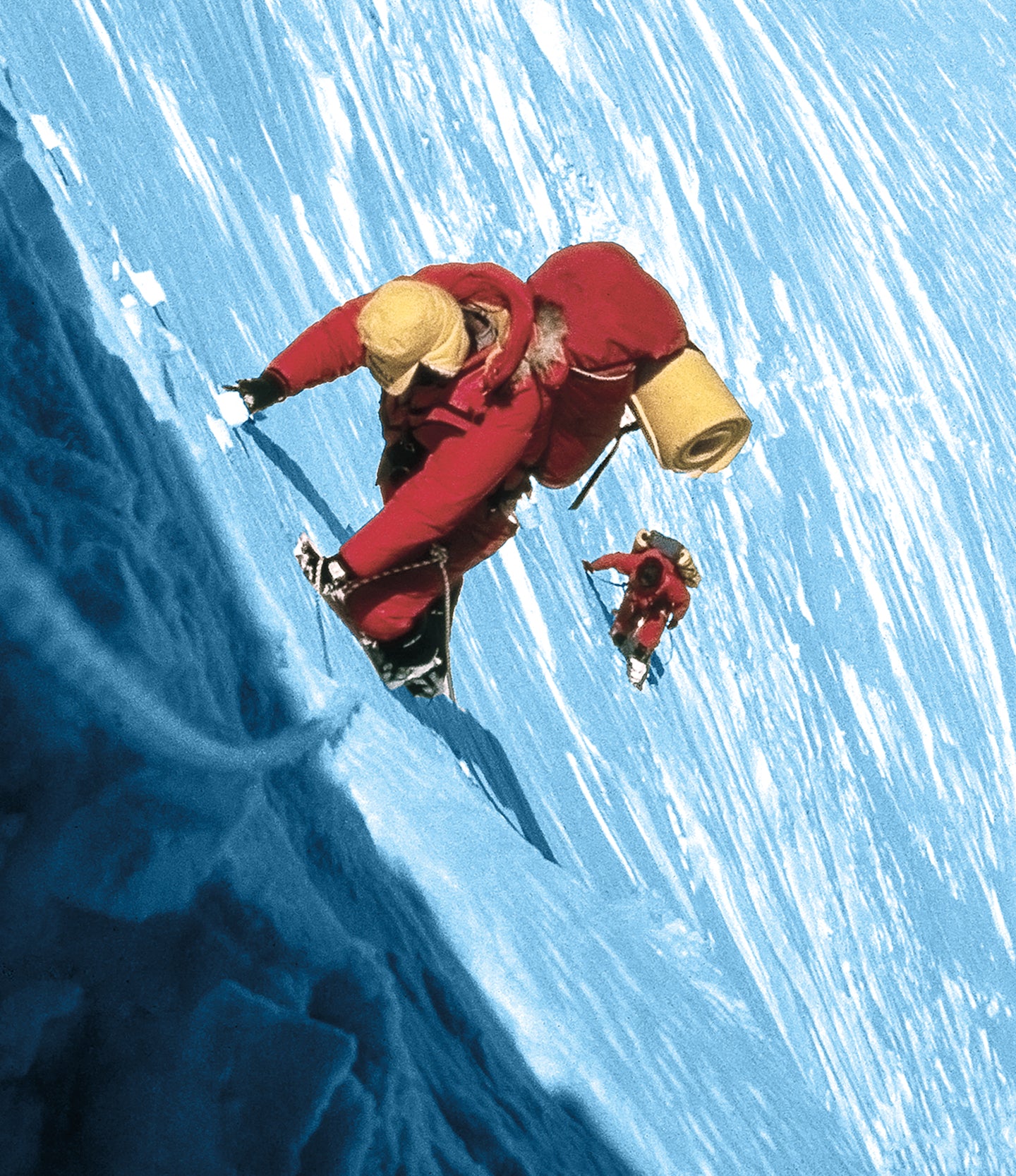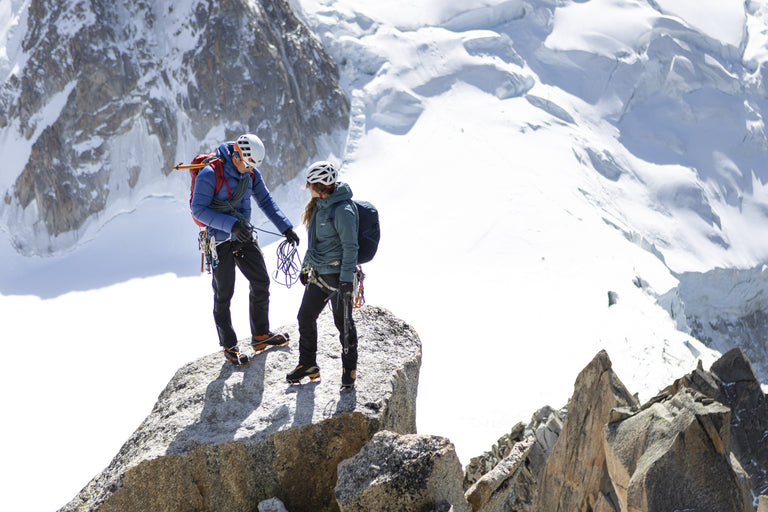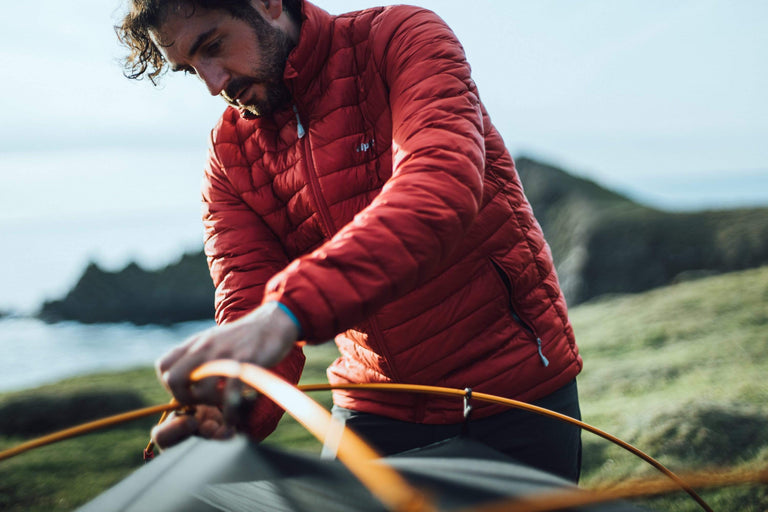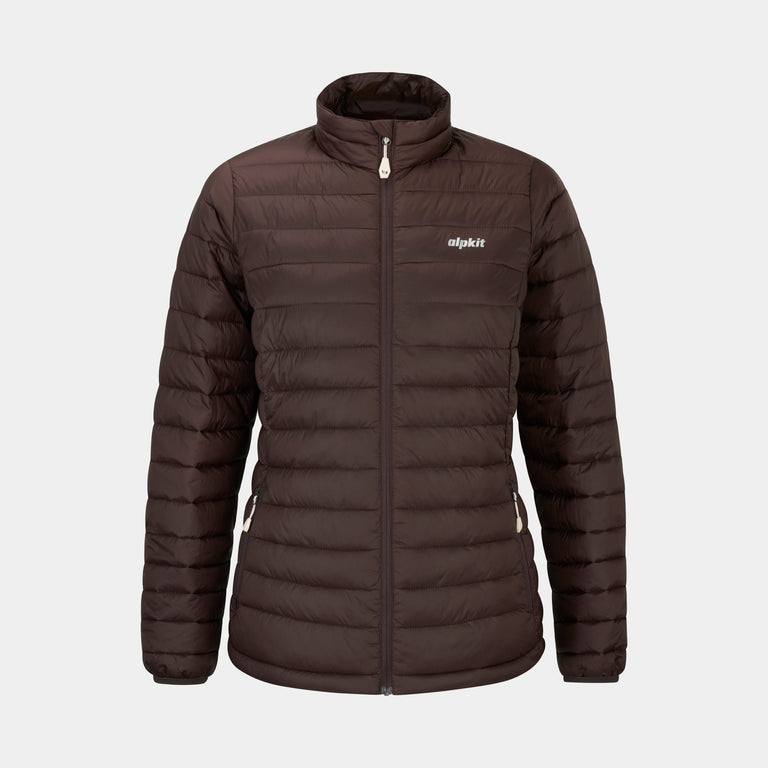
Everest the Cruel Way by Joe Tasker reviewed. Classic mountaineering account of an audacious Himalayan climb without oxygen or Sherpa support.
What you are about to read is an exclusive extract from the book 'Everest the Cruel Way' by Victor Saunders. To see more books we love and books that caught our eye, look at our book shelf.
[Exploring the Lho La plateau]
For two days the weather had remained calm and clear. Expecting the worst, we tended to be suspicious of our good fortune, believing that we had not seen the real face of winter yet, for otherwise, apart from the short days and bitter nights, this would be an ideal season for climbing compared with the unstable spells before and after the monsoon. As it was, lower peaks, not so affected by the jet-stream winds and requiring shorter time for their ascent, could well be climbed in these clear December days.
Alan Rouse was feeling physically much better as well as psychologically relieved that the incident with Dawa was now over, and he went up with the Burgess twins and John Porter. In spite of it being his first time out from Base Camp, Alan was able to reach the top of the overhanging groove and spent all day with John tediously hauling loads up from below. It was too exhausting to climb the fixed ropes and the now repaired wire ladder with a full sack on one’s back. Climbing the corner consumed time and energy, so whilst the twins found the way and fixed rope along the ridge above the corner, Alan and John formed a stock pile of equipment.
The rest of the ridge was unexpectedly hard. Behind the yellow wall of rock, up which ropes had been painstakingly fastened, was a vast amphitheatre 200 feet wide separating the top of the wall from the Lho La plateau. It plunged in 2,000 feet of avalanche-scoured rock and ice to the glacier. Blocks of ice stood, like rows of houses, waiting their turn, and the loss of equilibrium as the mother bed of ice advanced, to plunge and shatter into a million pieces to form another immense avalanche. If hell were a cold place its entrance would resemble this.

To reach the Lho La the twins had to climb in a rising arc along the ridge of rock which encircled the top of the amphitheatre. Much of the way was easy, with short steps of vicious difficulty, overcome with much exertion and panting. The very atmosphere of the place was enough to inspire nervousness, but the rock itself had also become massively loose. The final hundred feet horizontally rightwards to gain the snow was on blocks adhering, without visible support, to the wall behind. ‘The traverse of the eggshells’ became its name. On reaching the snow, out of rope and ready to descend, Alan was disappointed to find still no sign of a place in which to pitch a tent or dig a cave.
At Base Camp Paul, Brian and myself made ready to go up the next day with every intention of establishing a tent or snow cave, in order to stay on the mountain. The film team had been strangely inactive for a while; I began to wonder if they were being affected by the altitude and slipping into a routine which made it seem as if there was not enough time to do everything, but proved a tendency to put off doing anything until another occasion. Many expedition films fail to succeed entirely on account of this – just surviving on a daily basis at Base Camp can be quite exhausting enough. Allen Jewhurst, director of the film, however, had gone up to the start of the fixed ropes in the company of the lead party, to weigh up camera positions. Unfamiliar with the route, he had sat and waited till Paul, who was making a short carry with a load to the start of the fixed ropes, arrived and descended with him.
It was dusk when John, looking worn and weary, burst into the dining tent where the rest of us were settling into our places for the evening. A growing anxiety at the late return of everyone from the hill was immediately relieved. John sank down on to a box for a seat and questions about the day’s climbing started. John has a way of not answering questions immediately nor in the way expected.
‘The others aren’t going to get here before dark, I don’t think they’ve got torches and they are short of a pair of crampons.’
Everyone looked at him; they were not the words expected in answer to the questions. My mind ran over a checklist of essentials and their whereabouts – ice axe, crampons, torch, spare torch, mitts, boots. Brian next to me seemed to be doing the same. John took the silence for reluctance to stir out into the cold night: ‘Look, those guys have been working hard all day and are struggling down in the dark. Are you going to sit here on your arses? They need torches to get across the glacier. I’d go back but I’m knackered.’
It was a startling outburst. John, fully dressed for the cold outside, still with his crampons on, did not realise that anyone going out into the night would have to get ready. It might take ten minutes, it might take two hours to locate and return with the other three, but to venture out unprepared invited disaster. Bare hands would be numb in minutes.
Brian and I scratched around in the dark inside and outside our tents, trying to remember where things were, and, prepared as best we could, hurried urgently over uneven ground towards the slopes up the Lho La. The night was still but there was no sound carried on the air; tragedy in the mountains can occur from the most innocuous situation, and flutterings of unease tightened my stomach. Where the ice was no longer roughened by rubble we stopped and strapped crampons to our boots to allow us, to walk more easily on the undulating, glistening surface. We followed the pools of light cast by our torches along the marks on the ice made by the earlier passage of our feet and then, unheralded, the chattering voices of swaying figures rose up from out of a hollow to meet us. There was laughter and ribald curses from the trio, making me feel foolish for the anxiety I had felt for them.
They were tired and indeed had no torch; Alan and Al were sharing a pair of crampons – one boot each securely bound with a row of metal spikes to give purchase on the ice, the other, rubber- soled, slipping and unbalancing their gait, making a mockery of any pretensions to be experienced mountaineers.
There was a warm comradeship in our meeting.
‘Thanks for coming to meet us, lads,’ said Ade, ‘it’s really been hard work getting across in the dark.’
We returned together to camp, seeing the dining tent now as a cosy haven by comparison with the outside world.
I awoke from a disturbing dream in which I was hanging by the neck and a vision of failure on the route. There were no grounds for these unsettling dreams except that I had gone to sleep with a familiar feeling of apprehension before embarking on the next stage of the climb, the next step into the unknown.
Movement and a sense of fitness banished such chimeras in the bright light of day. I reached the top of the fixed ropes by 1.30pm., weighed down by a sack which held, in addition to the essentials for a stay of two or three nights, 40 pounds of food and gear. Paul and Brian, similarly laden, were also toiling up the ropes to stay.

We planned to start digging a snow cave and, if this was not big enough to sleep in by evening, to erect a tent for the night. We had little hope of a tent lasting very long in the winds of the Lho La, but hoped to dispense with it after one night. There was nowhere in sight that seemed suitable to start digging a cave. Hard, icy snow swept upwards at too precarious an angle for siting a cave. Rationalising the situation, I knew that we would not do any digging at all this day, there was still some gear to be picked up from the cache at the top of the corner and there was not even a place where we could put up a tent.
Dumping my sack, I scrambled upwards on easier ground, kicking the edge of my boot into the snow and holding on to the rock against which it abutted. It was a foolish but delightful romp, liberated from the weight of my sack and the constriction of being fastened into a rope. I would not be allowed even one slip, not one error of judgement, but I had the strength and confidence of fitness, reaching up and testing each handhold before pulling up on it; kicking a boot into the snow and trying my weight on that foot before committing myself to it completely. The enthusiasm was rewarded; a broad ledge, ten feet wide, opened up to my left. It was littered with rocks, easily wide enough for a tent and the rocks could be made into a wall as a wind-break. Reassured at this alternative to a frantic attempt at excavating a snow cave as a shelter for the night, I turned to descend and propose the change of plan to Paul and Brian.
I had not looked down as I climbed upwards above the ropes. As I turned now and saw the ice runnel up which I had come, ending abruptly at the edge of the precipice of the amphitheatre, I felt sick and nervous at the insecurity of my position. I descended the 200 feet back to the ropes with my stomach knotted in apprehension, clutching more tightly than was warranted to every hold, inescapably aware of the folly of my situation.
Paul had reached the end of the ropes when I arrived back. He agreed that it would be most sensible to pitch a tent immediately than risk having no shelter ready by nightfall.
‘Did you pick the tent up? I couldn’t find it.’
‘No, I looked in one of the sacks halfway up the corner, it wasn’t in there.’
‘Damn, I wonder if Brian’s got it.’ ‘What’s it like up to the ledge?’
‘O.K., but be careful. You’ll be safer with crampons on.’
I slid down the ropes strung along the rim of the amphitheatre and regained the top of the corner with a pleasurable ease which made ridiculous the effort needed to climb upwards on the same ground. I could hear Brian long before I could see him, as his hacking coughs echoed up the corner.
There was no tent with the gear at the top of the corner and Brian didn’t have it either. I slid down the ropes of the corner, imagining an ignominious retreat if there was no tent to be found and dreading the long haul back up the ropes if there was.
The tent was concealed in a sack which Paul had not examined; I shouldered the sack and started back up.
The preliminary plan of digging a snow cave for the night had been absurdly ambitious; we had barely time to erect the tent, build a protective wall of rocks and gather snow to melt for the evening meal before sunset and the rapid night took over.
Brian was weary from the journey up. He sank into the dark interior of the tent, thrusting out a grateful hand for mugs of liquid and plates of food as they were prepared. Sometimes his pained face would appear in the light of the stove as he strained forward, shaken by another spasm of coughing.
Heavy-boned and big-framed, Brian gave me, as I grew to know him, the impression that he was always pushing himself hard. If it was recounting lurid stories, Brian strove to produce the most startling; if it was outrageous behaviour, Brian would outgross anyone. On the mountain I could see him driving himself on against the affliction of his crippling cough long after I would have let myself turn back. Brian was continually forcing himself along the road of excess in his search for the palace of wisdom. I imagined his throat to be raw and bleeding.
Again the night was suspiciously calm. I was numb when I crawled back from the edge of the platform from where I had been futilely attempting to make a radio call to Base Camp thousands of feet below, but only the lightest breeze rocked the tent. Our platform was awesomely poised on the very brink of a precipice, but somehow tucked away from the wind streaming across the Lho La plateau. We spent a restless night, the three of us pressed close together, suffocated with the tent door closed and chilled with it open. Next day I had a headache and the three of us were slow to make a start.
To find a more level area of snow in which we could dig a cave without risk of slipping down a steep slope as soon as one stepped outside, we headed for the plateau of the Lho La itself. A basin of firm snow, split by a number of crevasses, gave way to easier angled slopes that descended to level ground. I was ready to go and Paul suggested I lead off, fixing rope on to aluminium stakes driven into the snow until I was no longer above the gulf of the amphitheatre. There was no advantage to the climbing in having a rope there, but we would have to cross and recross this slope many times, and it would be so much safer with a hand rail in place. Without a fixed rope, a gust of wind could overbalance someone and throw him down the slope into the amphitheatre.
I was nervous of starting off, the slope of snow looked steep, but it was an optical illusion, the yawning abyss a hundred feet below influencing my view of the situation. When I was clear of the abyss, I drove a final stake into the snow and shouted to Paul and Brian to follow.
The snow slope I was on eased down for 300 feet into a level plateau; this in turn swept northwards and down, losing itself in a jagged maze of ice pinnacles; remote, mysterious Tibet lay brown in the distance. Across the plateau rose the icy escarpment of the West Ridge, 3,500 feet of snow, rock and ice to the rounded dome of the shoulder. Lurking elusively, a thrilling sight behind the Western Shoulder, was the summit – so far away. A banner of cloud streamed off it, the symbol of winter, barren and windy. That was our objective but, as usual, I found myself shelving any thought of what was to come and concentrated on the task of the moment.
Brian had spent the summer in the Karakoram at the other end of the Himalayas taking part in the ski descent of Baltoro Kangri. He was enthusiastic about a snow cave they had dug there which, according to the description, sounded like a palace. Paul and I, professing less experience in such matters, looked to Brian for suggestions as to the best place, and method of construction.
There was a science to it; an optimum angle of slope; a method of achieving the correct lengths of entry into the slope before starting to form a chamber. It was hard work, there was no science about that. We were at 20,000 feet and the maximum spell of digging that any of us could do was ten to fifteen minutes. We took it in turns.
John and Ade arrived in the course of the day while Brian and Paul were digging and I was having a rest. ‘You’re foreman, are you?’ Ade joked when he came, watching shovels full of snow being ejected from the hole.
They brought news of Pete injecting the cook boy with an antinausea drug; the sickness seemed to be circulating round the camp. Alan was ill again and Al had gone down with the same thing. Usually on an expedition all germs seem to disappear. It is so cold that they are killed off or rendered inactive.
This time, however, in spite of the cold, we seemed to be afflicted by a particularly virulent strain, and once the sickness took hold, recovery was very much harder.
John and Ade did not stay long. They dumped their loads and hurried down. By 4 p.m. we had dug out a cave, big enough for one person. The snow was hard, ideal for climbing, taking only the front points of the crampons to give a secure foothold, but tiresome for digging. The early stages were the worst as the entrance had to be a narrow tunnel to keep out as much wind as possible, which meant that only one of us could work, sometimes on knees, sometimes lying flat, working away under showers of ice splinters. It did not look much for a day’s work but there was room now for two people kneeling upright to dig all the time, and next day we expected progress to be much quicker with a habitable snow cave by the time we finished.
Somehow I was manoeuvred into being cook again, a laborious task with much of the time being taken up just melting snow to get the liquid to make a meal or a drink. From start to finish, in order to obtain the necessary bodily intake of fluid, cooking a meal can take three or more hours. I kept dozing off whilst waiting for the snow to melt and the water to boil. The boiling point of water at high altitude is much lower than at sea level. Due to the decreased air pressure, the water, vaporises at a lower temperature, but the heat is not there to cook the food. Most things take three times as long to cook as at sea level.
‘Does one of you two want to have a go?’
‘You seem better acclimatised than us – we need the rest!’
I realised how Dick Renshaw must have felt on K2 when Pete and I had languished in our sleeping bags whilst he, uninfluenced by any mood of lethargy, used to be up first thing preparing breakfast to get us moving. There is some mechanism of passive resistance on expeditions which conspires to instil a reluctance to make more effort than absolutely necessary, so that making a cup of tea can come to seem like a monstrous task. Yet more than on any other expedition the dehydration effect of altitude and cold was making it essential to drink more than the accepted minimum of eight pints a day and to force oneself to eat whether one felt like it or not. Without the liquid, altitude sickness and headaches occur much more readily, and without the food we would be weak and much more susceptible to the cold.
After another fitful night we worked on the snow cave until the middle of the afternoon. We were weary now and my fatigued muscles seemed to be contributing little to the enlargement of the cave. Al arrived and I followed him down to Base Camp, having dismantled the tent lest it should be blown away by the wind. Paul and Brian followed later. There was the warm ache of tiredness in my legs as I crossed the glacier back to camp and the thicker air of Base Camp made me drowsy. Alan, worn out by his debilitating sickness, looked jaded and depressed.
We now had a base for action on the West Ridge itself. The ascent up to the Lho La had been technically much more difficult than we had expected, and more difficult than anything else we hoped to find higher up. It felt to me like a preparation, an essential and unavoidable part of the climb, but nonetheless only a preparation, and that it was from the Lho La that I would begin to feel that real progress was being made. For the three of us who had been up there it was time for a rest but I envied the discoveries that those who were going up next would make as they explored new ground.




![Filoment Vest [Womens]](http://alpkit.com/cdn/shop/files/womens-filoment-vest-2024-celestial-COLOUR-CHANGE.jpg?v=1732661095&width=768)
![Filoment Vest [Womens]](http://alpkit.com/cdn/shop/files/Filoment-Vest_AW24_Womens_Chamonix_3908_1.jpg?v=1762190565&width=768)

![Filoment Hoody [Mens]](http://alpkit.com/cdn/shop/files/AW25-Chamonix-JW-5042_2.jpg?v=1764948177&width=768)
![Filoment Hoody [Womens]](http://alpkit.com/cdn/shop/files/womens-filoment-2024-celestial-COLOUR-CHANGE.jpg?v=1762183751&width=768)
![Filoment Hoody [Womens]](http://alpkit.com/cdn/shop/files/Camping-Arran-9548_1.jpg?v=1762190561&width=768)


![Fantom [Womens]](http://alpkit.com/cdn/shop/files/womens-fantom-2025-lego.jpg?v=1761315471&width=768)
![Fantom [Womens]](http://alpkit.com/cdn/shop/files/AW25-Chamonix-JW-6769_1.jpg?v=1764162276&width=768)



![Talini [Womens]](http://alpkit.com/cdn/shop/files/talini-1.jpg?v=1761823381&width=768)

![Heiko [Mens]](http://alpkit.com/cdn/shop/files/Heiko-Men-Location-1.jpg?v=1764163055&width=768)
![Heiko [Womens]](http://alpkit.com/cdn/shop/files/heiko-womens-2025-cosmos.jpg?v=1759943580&width=768)
![Heiko [Womens]](http://alpkit.com/cdn/shop/files/Heiko-Location-2.jpg?v=1765360327&width=768)
![Jura Mountain Smock [Womens]](http://alpkit.com/cdn/shop/files/jura-womens-2025-alder_d06073cb-b198-4e64-8c67-594b1ed0069e.jpg?v=1762186178&width=768)
![Jura Mountain Smock [Womens]](http://alpkit.com/cdn/shop/files/Alpkit-Winter-Swim-91_1__1.jpg?v=1762190567&width=768)
![Jura Mountain Smock [Mens]](http://alpkit.com/cdn/shop/files/jura-mens-2025-alder.jpg?v=1759922692&width=768)
![Jura Mountain Smock [Mens]](http://alpkit.com/cdn/shop/files/jura-mens-2025-alder-1.jpg?v=1765361100&width=768)